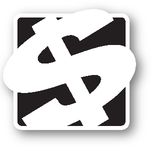CHAPTER 12
What Can You Afford?
The number one way to SAVE BIG on cars is to buy them used. The number two way is to pay cash for them. It may sound ambitious to pay cash for a car, and I realize not everybody can—yet. If that’s your situation, don’t worry, there are two painless plans for paying cash for your next car. Cash is king because financing a vehicle is such a terrible deal. When you take out a car loan, you are paying an increased price for the vehicle in the form of interest and you are getting a decreased value in the form of depreciation. Nevertheless, if you have to finance for now, you can still SAVE BIG by limiting the length of your loan. And whether you’re paying cash or taking out a loan, there are concrete steps you can take to figure out what you can afford.
In this chapter, learn to SAVE BIG by:
• Paying cash instead of using credit to buy a used car.
• Limiting your loan term to two years if you must finance.
• Figuring out—really figuring out—what you can afford.
• Shopping for a loan before you shop for a car.
Cash Is King
I want you to pay cash for your car. The best kind of car loan you can get is no car loan. Paying interest on something that is definitely going down in value is a horrendous waste of money. Worse yet, your car could depreciate faster than you pay it off, putting you underwater in your car loan. That means you owe more on the car than it is worth. Pay cash instead and you will never have that sinking feeling. In fact, you will SAVE BIG.
Let’s get right to an example. Say you decide to buy that one-year-old Ford Taurus we talked about earlier for $14,990. Let’s compare the cost of paying cash for it with the cost of financing it. According to
Edmunds.com, the most popular auto loan term in America is five years. Horrifying but true. I just found a five-year car loan online with a 6.5 percent interest rate. That’s a pretty good rate, but even at that rate, financing the Taurus is way more expensive than paying cash for it. Here’s the comparison:
 Used Car Loan versus Cash
Used Car Loan versus Cash| Cost over life of loan | $ 17,598 |
| Cost if you pay cash | 14,990 |
| BIG SAVINGS = | $ 2,608 |
What a rotten deal! It costs $2,608 extra to finance the vehicle. And we know the Taurus will have lost as much as 65 percent of its value by the time this five-year loan is paid off because of depreciation. So by financing, we will have paid more than $17,500 for a vehicle that is now worth only about $5,000. Not good. And yet most people finance their cars. In fact, most people finish paying off one car loan and immediately trade that vehicle in for another one with another loan. A car payment is a permanent part of their lives. Bad move! Cash is king. Pay cash now and you can live like a king later.
What Can You Afford If You Pay Cash?
If you heed my call to arms and pay cash for a car, then figuring out what you can afford is a really, really simple formula. Here’s how it goes:
How much cash do you have?
That’s what you can afford to pay.
If you’re lucky enough to have piles and piles of cash, go read some other book. Kidding! If that is your situation, you’ll want to spend less than you have available on your car. I repeat: Cars are terrible investments. Correction: They’re not investments.
Make Loans Short and Sweet
Okay, I realize not everybody will be able to pay cash for a car—at first. Fortunately, if you must take out a car loan, there is still a way for you to SAVE BIG. Here are the two parts of the plan:
1. Big down payment. Make as big a down payment as you can. The national average is less than 20 percent. You can do better—40 to 50 percent is more what I have in mind. The more you put down, the less you will be paying interest on. If you already own a car, a big down payment may not be as hard as it sounds because you might be able to combine your trade-in value and some savings to come up with the money.
2. Two-year loan term. Limit your loan term to two years. A two-year loan should assure that you are paying the car off faster than it depreciates. And it will limit the amount of interest you shell out. Let me make this point with some more math. Once again, we will use our used Ford Taurus for $14,990 and our low interest rate of 6.5 percent for this example. Here’s how much you can save by choosing a two-year loan instead of a five-year one.
 Comparing Loan Lengths
Comparing Loan Lengths| Term | Cost |
|---|
| Five years | $ 17,580 |
| Two years | 16,032 |
| BIG SAVINGS = | $ 1,548 |
Yes, $1,548 saved! Even though the interest rate is the same, by shortening the number of years you pay that interest, you SAVE BIG.
Watch the Clock at the Parking Garage
Once you get your new used vehicle, you’ve got to park it somewhere. Many garages set their “in” clock slow and their “out” clock fast so it seems like you’ve been there longer than you really have. They are trying to bump you up into the next price level. Keep an eye on the time elapsed. It’s fun to bust scams like this!
What Can You Afford If You Finance?
I showed you the two steps that will help you SAVE BIG if you must finance your vehicle. Now we need to drill down and figure out what you can actually afford within those guidelines. Let’s follow Carolyn D. of Florida as she cruises through this process.
Carolyn comes from a big, boisterous family where people hand their cars down to each other. But her latest freebie just broke down on the freeway, and nobody else in the clan is quite ready to give up their old vehicle yet, so for the first time in her life Carolyn is going to take out a car loan.
Carolyn has $4,000 in cash and her old car is worth $3,000. She can combine the two and make a big down payment, as I’ve suggested. She likes the idea of limiting her loan to two years given that she’s never even had a car loan to worry about before.
That leaves just one other moving part: her monthly payment. I don’t believe in starting with abstract formulas to figure out the monthly car payment you can afford. Instead, what Carolyn—and you—should do is create a detailed budget that includes every single essential (from mortgage payments down to birthday presents) and see how much is left over for a car payment. After doing this, Carolyn thinks she can swing $375 a month. Once you’ve determined your monthly payment, if you want to cross-check it to make sure it’s not too high, then it’s fine to use a formula. Your monthly car payment should be no more than 20 percent of your monthly after-tax income. The less the better.
When you have these numbers in hand—down payment, loan term, and monthly payment—then you can go to an auto loan calculator and plug them in to see what price range you can afford. Be sure to use a calculator that does
not list the price of the car as one of the factors. Most of the calculators I have seen online start with the vehicle price. That is just wrong! Totally backwards!
First you should figure out what you can afford,
then which car you’re going to buy, not the other away around.
ConsumerReports.org and
Edmunds.com both have calculators that do it right. I will link you to them from my site,
www.ElisabethLeamy.com.
I plugged in Carolyn’s numbers and this is what we learned:
 What Can Carolyn Afford?
What Can Carolyn Afford?| Down payment | $ 4,000 |
| Trade-in | $ 3,000 |
| Monthly payment | $ 375 |
| Loan term | 2 years |
| Interest rate | 6.5% |
| Loan she can afford | $ 8,418 |
| Car she can afford | $ 15,418 |
By these calculations, Carolyn can afford a vehicle that costs $15,418. She shouldn’t buy anything that costs more than that, but that gives her lots of choices, including the 2008 Ford Taurus we’ve been using as an example.
Of the four factors involved—down payment, monthly payment, loan term, and vehicle cost—only one should be adjustable: the vehicle cost. Many people change the wrong variables. They go for a higher-cost vehicle because they fall in love with it. Then they make the loan term longer so that they can afford the monthly payment. Whoops! Wrong. And wrong again. If you do this exercise and find you cannot afford the car you’ve had your eye on, guess what? You should downgrade what you’re considering. Seriously. Sorry!
Two Easy Plans to Pay Cash for Your Next Car
1. Plan one: After you’ve figured out a monthly car payment your family can afford, subtract $50 from it. In other words, if you can afford $400 a month, resolve to spend only $350. Then use that $50 a month to immediately start a fund for your next car.
2. Plan two: Save nothing now, but after you’ve finished paying off your car loan, continue putting a payment of that same size into a savings account each month. You’re used to it, so it’s easy. Since you’re going to keep your car long past when it’s paid off, you should have enough money saved to pay cash for the next one.
Shop for Outside Financing First
If you must finance your vehicle, there’s another crucial rule you should know to SAVE BIG: Never shop for a used car at a dealership without first getting outside financing quotes. It’s one more factor the dealership can play around with in the messy math equation of buying a car. The process is torturous enough. Don’t add to the angst.
Here are some outside sources that you should consider:
•
Credit Unions. If you belong to a credit union, that is a terrific source for auto loans. Not a credit union member? Never fear, they are accessible to far more people than they used to be. Find one at
www.FindACreditUnion.com.
• Banks. Check local banks in your area. The bank where you have your checking account may even offer you a special deal for opening a second account there.
•
Websites. For good measure, try out a website that gives instant quotes like
www.Bankrate.com.
I just checked today’s available rates at all of these outside sources and here’s what I found:
 Car Loan Interest Rates from Different Sources
Car Loan Interest Rates from Different Sources| My credit union | 4.25% |
| A small bank in my area | 7% |
| Online quote | 9.14% |
| Bank where I have my checking account | 11.22% |
As you can see, by shopping around for an auto loan, I found a low interest rate of 4.25 percent, almost a third the size of the highest quote of 11.22 percent. The best deal was at a credit union, which is often the case. Now let’s see how that helps us SAVE BIG on a $25,000 car loan, the national average.
 Shopping Around for an Auto Loan
Shopping Around for an Auto Loan| Rate | Amount Owed |
|---|
| 11.22% | $ 28,032 |
| 4.25% | 26,112 |
| BIG SAVINGS = | $ 1,920 |
There you have it. Close to $2,000 in savings achieved through half an hour’s worth of work comparing interest rates. I love it when I make a small effort but achieve a BIG SAVINGS!
Dealer Financing Deals
With outside financing information in hand, now you can walk into the dealership with some knowledge that gives you power. Don’t ignore what the dealer has to offer; just don’t consider it on its own. Now you have a point of comparison. If you have excellent credit and the dealer is offering a special to get people in the door, you may get a great loan at the dealership. If you are interested in the dealer’s financing, be sure to negotiate the price of the car first and then terms of the loan. Keep the two transactions separate.
Know the Score
Used car salespeople have been known to tell customers their credit scores don’ t measure up even though they do. It’s their excuse for charging you a higher interest rate or claiming you don’ t qualify for the hot financing deal being advertised. So you should pay to find out your own credit score at
www.MyFico.com before going car shopping (more on getting your credit score in Chapter 19). That way you cannot be bamboozled into believing your score is lower than it is.
Always remember that car dealers can often make more money on the vehicle financing than they do on the vehicle itself! People seem to know that they need to hustle and haggle for the best deal on a car, but they forget to hustle and haggle for the best price on the car loan. As you saw, doing so will help you SAVE BIG.
BIG TIPS
• Pay cash for a car if you can.
• If you can’t, make at least a 20 percent down payment.
• Limit your loan term to two years.
• Use the right kind of calculator to find out what you can afford.
• Shop for financing at banks, credit unions, and websites before heading to the dealership.
 Used Car Loan versus Cash
Used Car Loan versus Cash Used Car Loan versus Cash
Used Car Loan versus Cash Comparing Loan Lengths
Comparing Loan Lengths
 What Can Carolyn Afford?
What Can Carolyn Afford?
 Car Loan Interest Rates from Different Sources
Car Loan Interest Rates from Different Sources Shopping Around for an Auto Loan
Shopping Around for an Auto Loan
